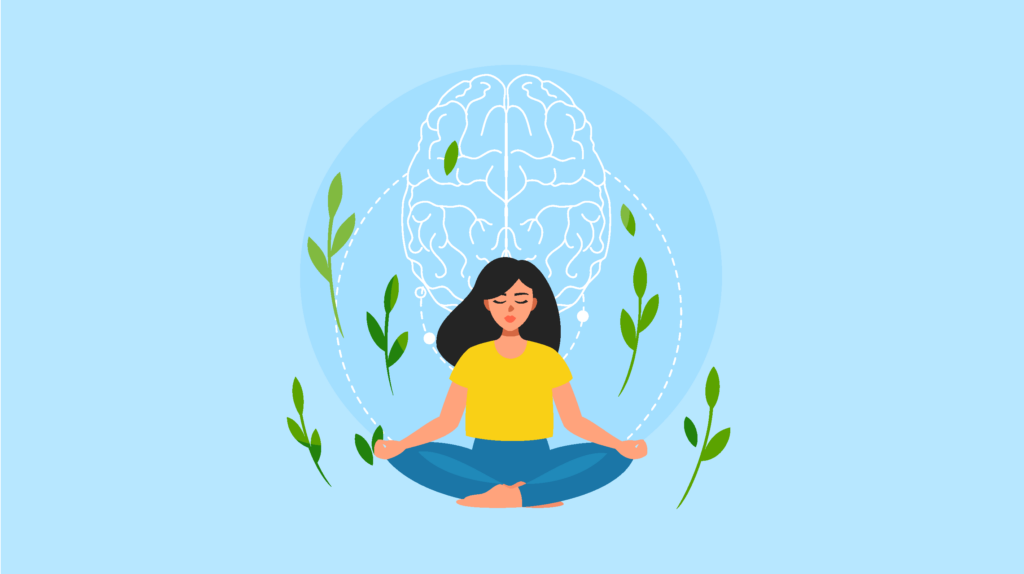Mindfulness Practices
It might be difficult to find moments of calm and clarity in the fast-paced world of today. We may have feelings of being overloaded and disengaged due to the continuous onslaught of information, demands, and diversions. Being fully present and involved in the present moment is the practice of mindfulness, which provides a potent remedy for the stresses of contemporary life. You can develop a stronger sense of serenity, clarity, and wellbeing by implementing mindfulness into your everyday practice. Numerous mindfulness techniques are covered in this article and are simple to incorporate into daily life.

The Importance of Mindfulness
Prior to getting into certain exercises, it’s critical to comprehend the importance of mindfulness. Fundamentally, mindfulness is about being aware of the current moment without passing judgment. It helps us to stop worrying about the past or the future and instead study our thoughts, feelings, and environment with acceptance and curiosity.
Numerous advantages of regular mindfulness practice have been demonstrated by research, including lowered stress levels, more mental clarity, improved emotional regulation, and even improvements in physical health like lowered blood pressure and better sleep. Mindfulness helps us respond to life’s problems with more resilience and perspective by teaching the mind to stay in the present.

1. Mindful Breathing
Mindful breathing is among the easiest and most successful mindfulness exercises. During this exercise, you will pay close attention to your breath as it enters and exits your body. You establish a sense of serenity and ground yourself in the here and now by doing this.
Methods for Practice:
Choose a comfortable stance, such as lying down or sitting.
To relax, close your eyes and inhale deeply many times.
Start observing how your breath comes in and goes out on its own. Observe how the air feels when it enters your nose, fills your lungs, and finally exits your body.
If your thoughts stray, softly return your attention to your breathing without passing judgment.
For five to ten minutes, keep up this technique, extending it progressively as you get more at ease.
You can practice mindful breathing anywhere, at home, at work, or even in a busy place. It’s a simple and efficient technique to center yourself.
2. Mindful Eating
Eating frequently becomes a hurried action in our fast-paced life, with little thought given to the experience. In order to eat mindfully, you should take your time, enjoy every bite, and give your entire attention to the flavor, texture, and aroma of your food. By doing this, you’ll not only enjoy your meals more but also be able to make better food choices and control your portion sizes.
Methods for Practice:
Give your food a moment of appreciation before you start eating. Take note of its scents, colors, and forms.
Slowly take your initial mouthful and enjoy the flavor and feel of the meal as it enters your tongue.
Chew carefully, attempting to distinguish various flavors and feelings.
Keep eating more slowly than normal and pay attention to every bite. Bring your focus back to the eating experience slowly if your thoughts stray from it.
As you eat, pay attention to how your body feels. Stop when you’re satisfied, not full.
By transforming a mundane task into a mindfulness exercise, mindful eating enables you to become more aware of your body’s signals of hunger and fullness.
3. Body Scan Meditation
A mindfulness exercise called the “body scan” is focusing on all of your body’s physical sensations, from head to toe. This exercise might help you relax and relieve stress by raising your awareness of potential tense spots in your body.
Methods for Practice:
Sit or lie down in a relaxed posture.
To center yourself, close your eyes and inhale deeply several times.
Start by concentrating on your toes. Take note of any feelings of tension, tingling, or warmth. Just observe; there’s no need to make any changes.
Focus on each area of your body one at a time, starting with your feet and working your way up to your legs, hips, abdomen, chest, arms, hands, neck, and head.
Take some time to focus on each place, noticing any feelings without passing judgment.
You can choose to breathe into that spot and visualize the tension dissipating with each exhale if you notice any tension there.
After checking every part of your body, carefully open your eyes and inhale deeply a few times.
A grounding technique called the body scan might help you de-stress physically and re-establish a connection with your body.
4. Mindful Walking
We walk every day, yet we frequently do it without thinking. Walking with awareness involves paying attention to your surroundings, your breath, and how your body moves. This is known as mindful walking.
Methods for Practice:
Pick a peaceful area where you can stroll without any disturbances.
Take a moment to stand motionless and feel the ground beneath your feet.
Step carefully at first, focusing on how your feet feel as they lift off the ground, travel through the air, and then land back on it.
Take note of your leg movements, the natural swing of your arms, and the cadence of your feet.
Remember to pay attention to the sights, sounds, and fragrances around you as you stroll.
Refocus your attention to the act of walking if your thoughts stray from it.
You can practice mindful walking indoors, on a city street, or even outside in the great outdoors. It’s a fantastic method to incorporate mindfulness with movement.
5. Mindful Listening
We frequently listen in our interactions and conversations with the intention of responding rather than truly understanding. Being completely present and paying close attention to what someone else is saying while not letting your own opinions or thoughts get in the way is known as mindful listening.
Methods for Practice:
Pay close attention to what someone is saying when they are speaking. Distractions like your computer and phone should be put away.
Pay attention to what they have to say without jumping in or planning your next move.
Take note of their body language, tone of voice, and the emotions that underlie their statements.
Bring your attention back to the speaker slowly if your thoughts stray.
Take a brief break after they’ve completed speaking before answering. This gap gives you time to consider what they’ve said and formulate a meaningful response.
You may build your relationships, communicate more effectively, and develop empathy and understanding by practicing mindful listening.
6. Mindful Journaling
Journaling is an effective technique for mindfulness and introspection. Writing down your ideas, emotions, and experiences can help you become more aware of and transparent about your inner self.
Methods for Practice:
Every day, dedicate a short period of time to journaling. Locate a peaceful area where you won’t be bothered.
Write down your present feelings and ideas to start. Allow your thoughts to flow onto the page without worrying about language or structure.
Try to be as open and sincere as you can when writing. Examine your feelings and ideas without passing judgment.
Prompts like “What am I grateful for today?” and “What challenges did I face today, and how did I handle them?” can also be used to help you write in your diary.
After writing in your journal, pause to consider what you’ve written. Take note of any trends or revelations that show up.
You can develop a better understanding of yourself, process your emotions, and monitor your progress by keeping a mindful notebook.
7. Mindful Technology Use
We spend a lot of time on our smartphones in the modern digital world, frequently idly scrolling around social media or checking emails. Using technology mindfully includes choosing when and how to use it, as well as becoming aware of how you interact with it.
Methods for Practice:
Establish and adhere to designated hours for checking your email, social media, and phone.
Give your intention some thought and pause before utilizing your device. Is there a reason you’re utilizing it, or is it just habitual use?
Be mindful of your feelings and thoughts when you use your gadget. Take a pause if you find yourself getting sidetracked or stressed.
By scheduling time each day to disconnect from technology and partake in other hobbies like reading, spending time in nature, or spending time with loved ones, you can practice digital detoxes.
You can decrease screen time, sharpen your focus, and establish a positive relationship with your gadgets by using technology mindfully.
Conclusion
Adding mindfulness exercises to your regular schedule doesn’t have to mean making big time sacrifices or huge lifestyle adjustments. More awareness, calm, and balance can be incorporated into your daily routine by implementing tiny, deliberate changes in your approach. Whether you choose to practice mindful breathing, eating, walking, or journaling, these activities provide you with effective skills to help you deal more easily and clearly with the difficulties of contemporary life. Your mindfulness regimen should begin with one or two practices that you find meaningful and work your way up from there. The more you practice mindfulness, the more its transformative impacts will become apparent to you since its benefits are cumulative.










Leave a Reply